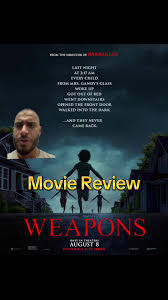Introduction
Weapons films, a genre often revolving around armed conflict, espionage, and the intense moral dilemmas surrounding the use of firearms, have historically captured the audience’s imagination. With recent global events and the ongoing discourse regarding gun violence and warfare, these films carry immense relevance, prompting discussions about their portrayal of weapons and violence. The significance of such films lies not only in entertainment but also in their impact on societal perceptions surrounding weaponry and conflict.
Recent Trends in Weapons Films
In 2023, the release of several notable weapons films has reignited interest in the genre. Films like “John Wick: Chapter 4” and “Extraction 2” display choreographed combat and advanced weapon systems, giving viewers a visceral experience while highlighting the technical aspects of modern weaponry. Streaming platforms have also enabled filmmakers to explore sub-genres, such as dystopian narratives in “The Matrix Resurrections”, which scrutinise the interplay between technology and warfare.
Social Commentary and Real-World Implications
Weapons films often serve as a form of social commentary. This is particularly evident in films depicting the consequences of war, such as “The Hurt Locker” and “American Sniper”, which delve into the psychological impact of combat on soldiers. The filmmakers’ choices reflect a nuanced portrayal of violence, prompting viewers to confront the ramifications of armed conflict. Furthermore, as discussions around gun reform and military intervention continue to intensify, these films can influence public opinion and spark critical debate.
Cultural Influence and Audience Reception
The cultural influence of weapons films cannot be overstated. With a significant fanbase, franchises such as “James Bond” and “Mission: Impossible” have not only entertained but also shaped the depiction of espionage and warfare in popular culture. Audience reception of these films varies widely; while some viewers appreciate the action and suspense, others critique their glorification of violence and weapon use. The disparity in perspectives highlights the complex relationship between media portrayal and societal attitudes towards guns and conflict.
Conclusion
In conclusion, weapons films hold a significant place in modern cinema, serving both as entertainment and a reflection of societal issues surrounding violence and warfare. As the genre continues to evolve, it remains imperative for filmmakers to approach the subject matter with a sense of responsibility and awareness. The portrayal of weapons in film will likely remain a topic of discussion amongst audiences, fostering ongoing dialogue about their impact on culture and society.
